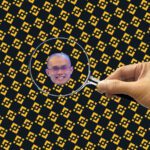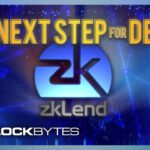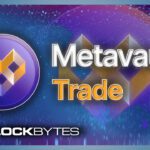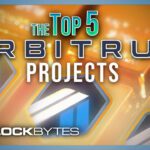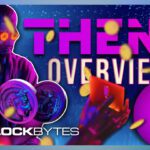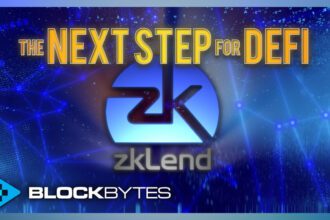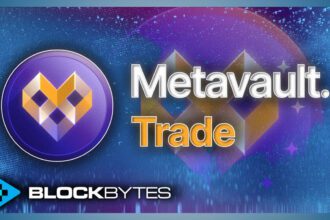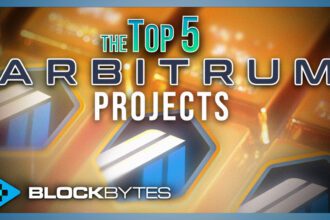Tired of being at the mercy of social media platforms’ algorithms and policies? Then take your talents to Web3 by minting a decentralized social profile with Lens Protocol. In this article, we’ll cover the web3 social media platform’s purpose, how it all works and why you should be using it.
What is Lens Protocol?
Lens Protocol is a decentralized social graph that developers can leverage to build social decentralized applications (dApps), and creators can use to take ownership of their content and audience. What’s better is that Lens Protocol is brought to you by the same team behind a legend in the DeFi space, Aave.
In January 2022, the Lens Protocol team published an open letter espousing the need for Web3-native social media. The letter addressed the growing concern around privacy and the need for true ownership of our digital identity footprint.
The app looks to provide easy ways for interested parties to create their web3 social media platforms. User ownership sits at the heart of the social graph, and the customizability of the features is an essential part of the project.
Lens Protocol seeks to address considerable flaws in the current social media environment, such as censorship and the extreme monopolization of the landscape (Looking at you, Facebook, Instagram, and Twitter).
How does it work?
Lens Protocol is built on the Ethereum scaling solution Polygon, both for its low costs and low carbon footprint. The protocol was also designed modularly– allowing new features to be added in the future without disrupting existing user data.
Lens Protocol’s social graph is established through a graph database (GDB). Such databases utilize graph structures that contain individual nodes and edges as connection points between them, places, things, and other properties to store data. These graphs show network members and the relationships between them.
What makes Lens unique?
Two core concepts make Lens Protocol unique. Its modularity and its integration with nonfungible tokens (NFTs).
Modularity
The protocol’s open social graph architecture allows any blockchain-based social media platform or dApp to plug into it. Moreover, unlike the structure of centralized services, which cannot be customized, the flexible design of Lens Protocol is based on modularity, allowing the latest features and fixes to be implemented and, at the same time, securing social relationships and user-owned content.
Since Lens Protocol is open source, developers have wasted no time building on top of it. Existing Lens dApps include LENSFRENS for finding other Lens profiles with similar interests and IRIS for subscribing to token-gated content.
NFTs
Every social profile on Lens Protocol is an NFT that contains all the content you create. Profiles can even be owned by multiple addresses, for instance, a DAO (Decentralized Autonomous Organization).
Establishing users’ profiles as NFTs is central to the protocol. With it, Lens Protocol’s decentralized social network members are empowered to create, maintain and own their content and profiles represented through NFTs, while Polygon’s layer 2 scaling solution stores all the data.
Such architecture helps to transfer full rights and complete ownership of content into the hands of users. Any content posted, whether a text, a picture, or even a change of avatars, is available on-chain.
Pros and Cons of Lens Protocol
Lens encapsulates the principles of web3, which separates it from the other web2 social media platforms currently available. Lens Protocol’s permissionless independent network creates a censorship-resistant environment that can not be interrupted. No third party, including centralized authorities, could remove or censor any content or ban any profile.
The protocol is not without fault. It is not the first decentralized social media protocol to hit the market. One of the earliest attempts, Steemit was a top 10 crypto project back in 2016 but now sits at rank 286 as of November 2022, according to Coingecko. It also faces competition from competitors, including DeSo and Minds, with both protocols making similar promises towards digital identity freedom.
How Do I Use Lens Protocol?
Lens Protocol’s design replicates typical social media functions (posting, resharing, etc) within the context of blockchain technology. All of these actions occur through smart contract interactions.
Profile NFTs
The creation of a profile NFT is the start of a user’s journey on Lens Protocol, and each profile is represented by one. Having a profile allows the user to add content or connect with others. When such a connection is established, an NFT-721 asset will be created and will show as the equivalent of an NFT-follow.
It is worth mentioning that individual addresses own these profile NFTs and that an address can own multiple NFTs of this kind.
Follow NFTs
Users generate an NFT for every profile they follow. The unique ID associated with these NFTs can be used, for instance, to reward early users of a platform.
Publications
Lens Protocol supports all media types, from text and photo to audio and video, with user posts showing up as publications. In terms of storage, Lens Protocol data can be stored on both centralized databases or decentralized solutions like IPFS (InterPlanetary File System).
Collect & comment
Collect is a method for creators to monetize their content. Through this, other users can mint NFTs of the content published by the original profile under the conditions stipulated by the original publisher.
Comments allow users to add additional content to another profile’s post. All of one’s comments get stored on a chain in that user’s Profile NFT.
Mirrors
Mirrors are the Web3 equivalent of reposting content. This simple feature can also be an affiliate money maker, where you earn a cut from anyone who collects the original content through your share.
Follow
Follow allows users to track other profiles. The minting Follow NFTs results upon the establishment of such a connection. Each profile may determine the conditions for this kind of connection. For example, a profile may determine that a fee of X amount of MATIC must be paid in such a scenario. Follow NFTs also have a Built-In Governance function.
Modules
The module is another important concept of Lens Protocol. The modules allow users to introduce custom functionalities to the system. Each module represents a whitelisted smart contract with code that runs under specific conditions. The system includes three types of modules.
- Follow modules represent the action of a user following another profile. Users set up their follow modules when creating their unique profiles. They follow a subscription model and are highly customizable.
- Collect modules is the one used for creating online articles.
- Reference modules exist for interacting with other users and commenting on their posts.
Closing Thoughts
Social media use is here to stay, but users are becoming more aware of their digital footprint and seeking free alternatives to the current web2 offerings. Lens protocol is positioned to unlock the potential of blockchain technology to improve the social media experience and potentially make a significant impact within the space.




